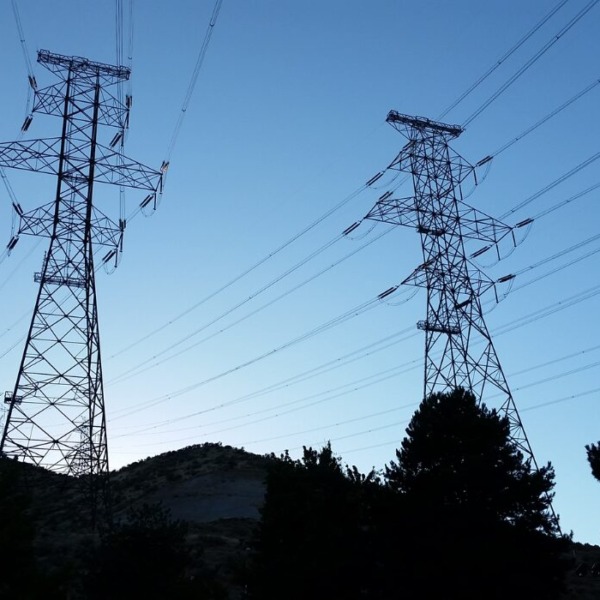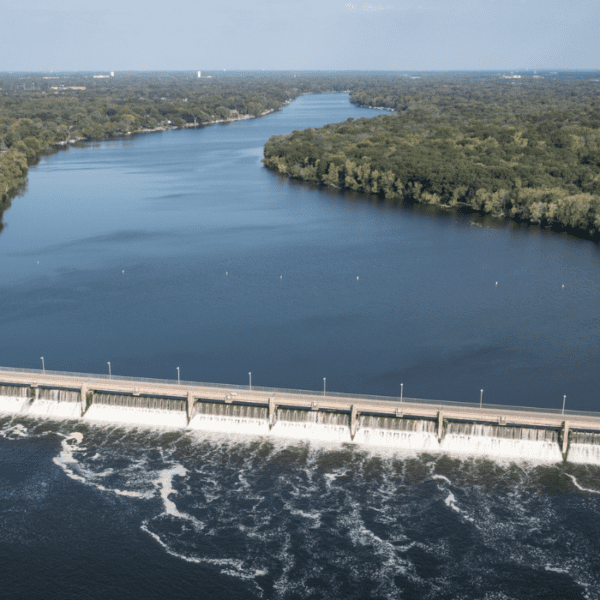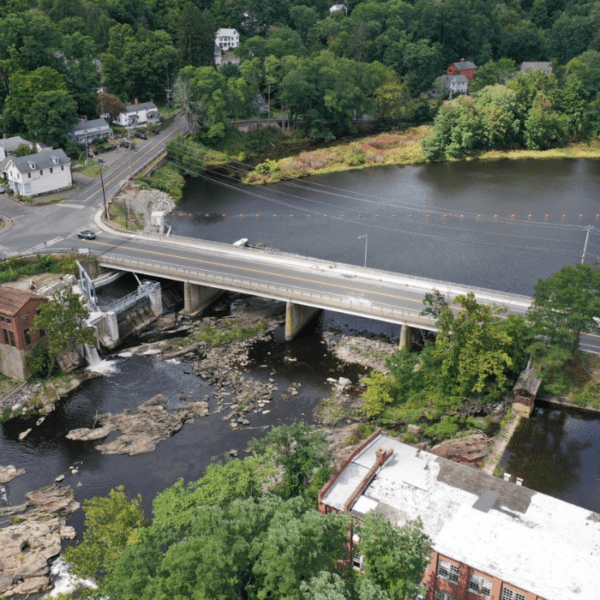*Editor’s Note: NHA’s Alaska Regional Meeting will take place in Juneau, Alaska, from August 28-29, 2024; learn more here.
Development of new hydropower in rural areas in the states of Alaska and Washington received a financial boost earlier in 2024.
The U.S. Department of Energy (DOE) awarded in February 2024 a total of $76 million to four proposed hydro projects – three in Alaska and one in Washington State.
The funding represents one of the largest federal investments in new greenfield, non-federal hydropower project deployment. The funding is particularly valuable to the projects in Alaska, where it is extremely challenging for remote communities with small populations to bear the large capital costs associated with constructing these needed facilities that will add to system reliability and assist in the transition away from diesel generation.
Crystal Enkvist, Executive Director and Executive Vice President at Alaska Power Association and ARECA Insurance Exchange, spoke to the impact of DOE’s investment in Alaskan hydro development:
“The Department of Energy’s significant hydropower investments in the remote Alaska communities of Angoon, Chignik and Old Harbor will go a long way toward decreasing their reliance on diesel fuel, increasing energy independence, aiding local workforce development, and enhancing opportunities for economic development. Alaska has a successful record of leveraging the many benefits of new greenfield hydropower in our communities.”

HYDRO FUNDING PART OF A LARGER AWARD
The $76 million awarded for development of the four hydro projects is part of a larger awards program from the U.S. Department of Energy called: the Energy Improvements in Rural or Remote Areas (ERA) program. The program is managed by DOE’s Office of Clean Energy Demonstrations (OCED) with funds made available through the Infrastructure and Investment Jobs Act (IIJA)/Bipartisan Infrastructure Law (BIL).
The funding is intended to accelerate clean energy deployment in rural and remote areas across the United States.
In all, 17 projects across 20 states and 30 Tribal Nations and communities received more than $366 million. In addition to the hydropower and conduit power projects, a range of other clean energy technologies are included — from solar, battery storage systems, and microgrids, to heat pumps, biomass, and electric vehicle charging infrastructure. For a full list of all project summaries, please click here.
The ERA is one of the few programs administered by OCED that is directly applicable to water power technologies. As such, the National Hydropower Association (NHA), other industry trade associations, and project proponents were closely engaged with OCED through its implementation process urging support for hydropower, marine energy, and conduit power facilities.
Follow the links to learn more about the four proposed hydropower projects:
- Chignik Hydroelectric Dam and Water Source Project
- Old Harbor Hydroelectric Project
- Thayer Creek Hydroelectric Project
- Yakama Tribal Solar Canal and Hydro Project
CHIGNIK HYDROELECTRIC DAM AND WATER SOURCE PROJECT

Location: Chignik Bay, Alaska
Federal Funding: $7,270,000
Selectee: The Lake and Peninsula Borough
Technology: Run-of-the-River Hydroelectric Facility
Project Features:
- Replace 100% of the community’s diesel consumption with renewable energy, and reduce energy burden
- Provide power for heating and electric vehicles, and support local economic development (tourism and fisheries) for the Chignik Tribal community
- Provide a new revenue stream with the Chignik Bay Tribal Council owning the hydroelectric facility and selling power to local utilities
Project Summary:
The Lake and Peninsula Borough plans to construct a new run-of-the-river hydroelectric facility, replacing a 70+ year-old wooden dam that is at risk of failure. Located in Chignik, Alaska, the project aims to improve energy and water security as the current dam leaks frequently, also jeopardizing the community’s only stable source of clean water. The proposed 2.1 MWh hydroelectric facility aims to replace 100% of the community’s diesel consumption. It also plans to provide excess power for heating, electric vehicle charging, and expansion of local economic activities like tourism and fish processing. The Chignik Bay Tribal Council will own the facility and plans to sell power to local utilities for 80% of the avoided cost of fuel, reducing total electricity rates by an estimated 7%.
As part of its Community Benefits Plan, this tribally owned project aims to improve community energy resilience, lower utility bills, reduce greenhouse gas emissions, improve local air and water quality, and spur local economic development.
The project team has secured over $6 million to rehabilitate the community’s water supply and anticipates creating up to 10 construction jobs with a tribal preference.
This project represents the culmination of a multi-year collaboration among community stakeholders, the project team, and the fishing industry, to help determine how lower electricity costs can increase local economic development and ensure local salmon streams are preserved.
OLD HARBOR HYDROELECTRIC PROJECT

Location: Old Harbor, Alaska
Federal Funding: $10,000,000
Selectee: Alutiiq Tribe of Old Harbor
Technology: Run-of-the-River Hydroelectric Facility and Electric Transmission Line
Project Features:
- Provide a year-round reliable energy source for a remote tribal village located 50 miles from the nearest social services
- Reduce energy burden and lower energy costs by directly subsidizing water, sewer, and electricity bills
- Demonstrate a tribal ownership business model that may be replicated in a multitude of similar villages within the region
Project Summary:
Alutiiq Tribe of Old Harbor plans to construct a run-of-the-river hydroelectric facility with a diversion structure, pipeline, powerhouse, and electric transmission line in Old Harbor, Alaska. It is anticipated that the project will be capable of generating about 3,470 MWh of energy annually and offset diesel fuel use at the local power plant by 95%, enabling a year-round reliable energy source.
Old Harbor is a remote Alutiiq Tribal village on Kodiak Island, Alaska, approximately 50 air miles from the nearest social services in the City of Kodiak. There are nearly 200 residents in Old Harbor and 83% are Native Alaskans who rely on a subsistence diet, collecting berries, fish, and game meat for food. According to the Denali Commission, 88% of residents live below the federal poverty line, with a median household income of $13,181, and experience disproportionally higher cost energy bills.
As part of its Community Benefits Plan, the Alutiiq Tribe and project partners will work to ensure stable sources of clean water and energy while reducing the negative health impacts of using diesel fuel.
The Tribe intends to sell hydropower generated through the project to local utilities for 80% of the avoided cost of a gallon of diesel fuel. The project will ensure energy security and will provide benefits to each household.
The Old Harbor Hydroelectric project seeks to demonstrate a tribal ownership business model that may be replicable in 209 similar rural villages within the region.
THAYER CREEK HYDROELECTRIC PROJECT

Location: Angoon, Alaska
Federal Funding: $26,920,000
Selectee: Kootznoowoo, Inc.
Technology: Run-of-the-River Hydroelectric Facility and Transmission Line
Project Features:
- Provide electricity generation and an emergency power backup system to prevent frequent power outages
- Provide a clean energy source to replace the community’s reliance on imported diesel and heating oil
- Reduce energy burdens across five different communities in southeast Alaska by lowering electricity rates
- Utilize local workforce and create both construction and maintenance jobs
Project Summary:
This project encompasses an 850-kilowatt, run-of-the-river hydroelectric project that has the potential to supply three times the community’s current electricity needs, providing additional power for heating, fish processing, electric vehicle charging, and tourism.
Kootznoowoo, Incorporated (KI) is the Alaska Native Village Corporation for the community of Angoon, the ancient home of the Tlingit Xóotsnoowe’di people with a population of 357 residents. In 1980, as part of the Alaska National Interest Lands Conservation Act (P.L. 96-487), KI and the community of Angoon gave up the rights to their ancestral land to establish the Admiralty Island National Monument. As compensation for the loss of the lands, KI was granted the right to develop Thayer Creek Hydroelectric. However, the initial agreement did not include funding, and more than 40 years later, the Tlingit people are still entirely reliant on imported diesel which leads to energy costs that are 4.5 times the national average.
This project aims to provide an avenue to address historical oversight and support access to reliable and affordable energy for the Tlingit people.
As part of its Community Benefits Plan, the project is expected to create 30 construction jobs and one full-time operation and maintenance position. Thayer Creek is expected to displace 12.9 million gallons of diesel and reduce carbon emissions. Once fully operational, the project is expected to reduce energy rates across five Alaskan communities.
YAKAMA TRIBAL SOLAR CANAL AND HYDRO PROJECT

Location: Yakama Indian Reservation, Washington
Federal Funding: $32,000,000
Selectee: The Confederated Tribes and Bands of the Yakama Nation
Technology: Solar and Hydropower Irrigation System
Project Features:
- Provide greater grid resilience, renewable energy supply, and service reliability for Yakama Nation while reducing energy burden in a tribal community
- Construct a micro-hydro system in an in-ground pressurized pipeline with solar energy generation over the pipeline right-of-way
- Improve irrigation efficiency to benefit grazing and irrigated agriculture, the area’s key economic drivers
- Ensure project dollars are reinvested and continue to circulate within the tribal community by training and hiring local tribal members
Project Summary:
This project aims to convert inefficient, open-water irrigation canals into a solar and micro-hydropower irrigation system. This cutting-edge system could conserve up to 20% more water and help energy-burdened residents save up to 15% on their utility bills.
Additionally, the project team plans to build solar panels on land that the Tribe knows does not risk disturbing cultural resources, providing a replicable solution for responsible solar siting. It is anticipated that deploying solar technologies will increase the Yakama Nation’s renewable power supply, while improving its energy resilience and reliability.
Improvements in irrigation efficiency could also benefit grazing and irrigated agriculture, the area’s key economic drivers.
As part of its Community Benefits Plan, the project team plans to train and hire local tribal members to ensure project dollars are reinvested and continue to circulate within the community. This project aims to create at least 10 full-time positions, leading to a stronger local economy and increased disposable income for the reservation.
The engagement plan also incorporates local stakeholders, including local labor and community-based organizations in a manner that can impact project decisions.
WHAT’S NEXT?
With more than $600 million remaining in the program, DOE OCED expects to make further Funding Opportunity Announcements (FOAs) in 2024.
NHA is working with Congress, as part of the FY 2025 appropriations process, to adopt specific direction to OCED to support even more demonstrations of advanced water power generation systems – hydropower, marine energy, and conduit power.












